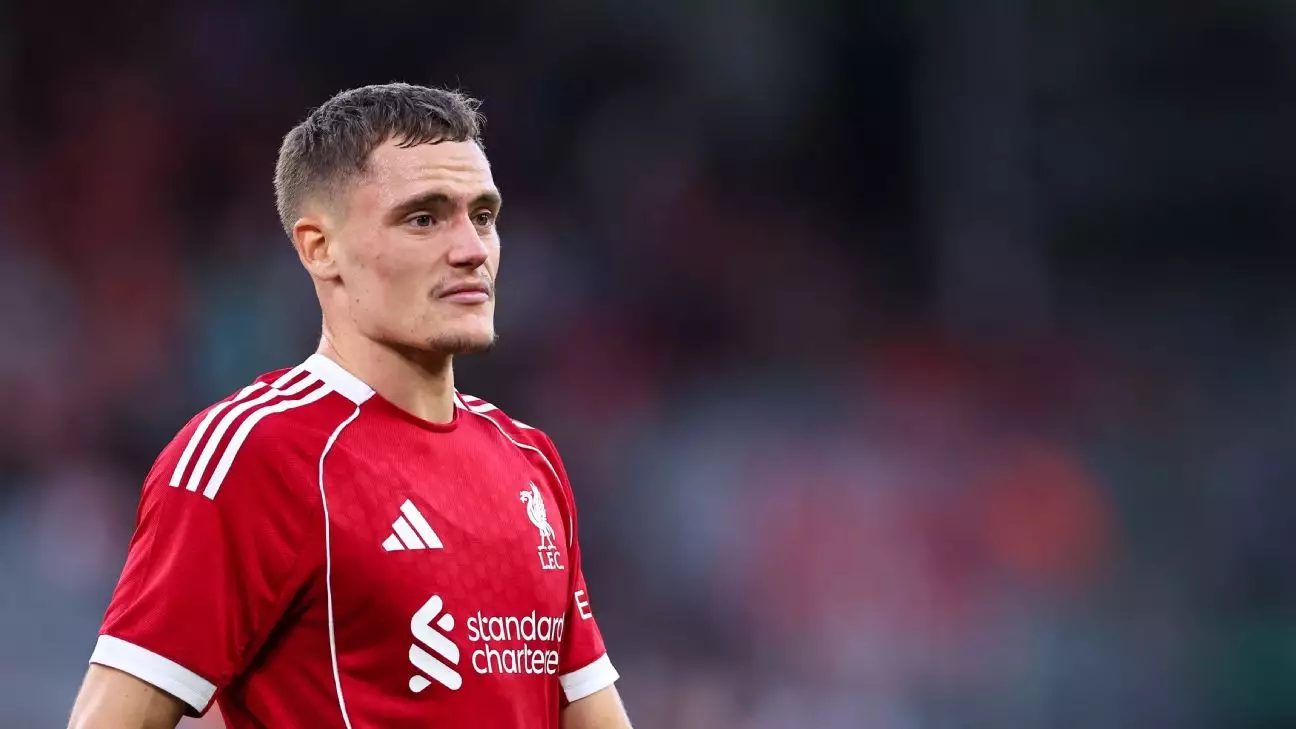Liverpool Football Club finds itself at a pivotal crossroads this season. Traditionally renowned for its relentless work ethic and tactical solidity, the Reds are now reshaping their identity by emphasizing creativity and individual flair. This strategic shift reflects the club’s desire to adapt in a modern football climate where versatility and unpredictability often correlate with success. The arrival of Florian Wirtz embodies this vision, signaling Liverpool’s intent to fuse innovative attacking play with their formidable defensive foundation. Instead of solely relying on classic wing play or structured buildup, Liverpool aims to unlock new dimensions of offensive dynamism, positioning itself as a more unpredictable, multi-faceted force capable of rivaling the Premier League’s best.
The Significance of Wirtz’s Style in Liverpool’s Tactical Landscape
Florian Wirtz’s debut at Anfield offers an insightful glimpse into Liverpool’s future tactical approach. Known for his exceptional creativity and dribbling finesse, the German prodigy adds a different flavor to the Reds’ attacking arsenal. His ability to operate in tight spaces and orchestrate intricate interplay could compensate for the void left by Trent Alexander-Arnold’s departure to Real Madrid. While Trent’s crosses and vision from wide areas have long been a hallmark of Liverpool’s approach, Wirtz’s talent introduces a new dimension—interior creativity, inventive playmaking, and cutting-edge dribbling culture. Coach Arne Slot’s emphasis on skillful playmaking underscores a deliberate move towards adaptability and improvisation, making Liverpool less predictable and more threatening in the final third.
Redefining Team Dynamics Through New Signings
Liverpool’s recent transfer window was clearly focused on injecting youth, flair, and versatility into their squad. Besides Wirtz, signings like Jeremie Frimpong, Milos Kerkez, and Hugo Ekitike symbolize a broader strategic overhaul. Frimpong’s linking with Salah exemplifies a modern full-back—offensive-minded and capable of contributing to counterattacks. Meanwhile, Kerkez’s robust defending provides stability at full-back, essential given Liverpool’s injury woes, especially in central defense. Ekitike’s flexibility across attacking positions complements the club’s philosophy of adaptable, multi-dimensional forwards. The collective impact of these players is not merely in their individual skills but in how they synergize to create more dynamic attacking combinations, challenging opponents to adapt constantly to Liverpool’s evolving threat profile.
Addressing Defensive Vulnerabilities and Set-Piece Concerns
While the attacking fluidity is promising, Liverpool must confront glaring defensive issues exposed during the preseason. The absence of key defenders like Virgil van Dijk and Joe Gomez left the team vulnerable, especially during set pieces. Conceding two goals from corners highlights an area demanding urgent attention. Effective reinforcement and tactical discipline are necessary if Liverpool hopes to contain physically robust opponents such as Crystal Palace, who excel at set-piece scenarios. The club’s pre-season performances reveal a team striving for cohesion, but these defensive frailties must be resolved lest they hamper the team’s ambitions. The balance between creative attack and resilient defense remains a critical challenge moving forward.
Respecting the Legacy While Embracing Change
The respectful homage paid to Diogo Jota encapsulates Liverpool’s respect for tradition and community. While they are actively investing in new talent and playing an ambitious style, they also honor their past and the players who have contributed to the club’s rich history. This dual narrative underscores a broader philosophical stance: innovation must be rooted in a respect for identity. The fans’ collective homage during preseason fixtures signifies a club that values its roots even as it pushes towards a progressive future.
The Unseen Challenges: Inner Turmoil and Future Uncertainties
Amid optimism, Liverpool faces the reality of potential upheaval. The rumors linking Nunez and Elliott with exits suggest a squad in flux, with some players possibly seeking greener pastures. Managing such transitions while integrating new styles and personnel presents a complex managerial challenge. Moreover, the emotional weight of last month’s tragic loss of Jota reminds us that amidst tactical shifts and squad rebuilds, football remains deeply intertwined with community and emotion. The club must navigate these internal and external pressures carefully—balancing innovation with stability—if they are to realize their full potential this season.
Analyzing Liverpool’s current trajectory reveals a club that is daring to reinvent itself, embracing creativity not merely as a tactical tool but as a core principle. This transformative approach, while inherently risky, signals a bold confidence in the club’s ability to adapt. Whether this gamble pays off depends on how well they can meld innovation with resilience—a lesson that cutting-edge football demands both invention and discipline.

